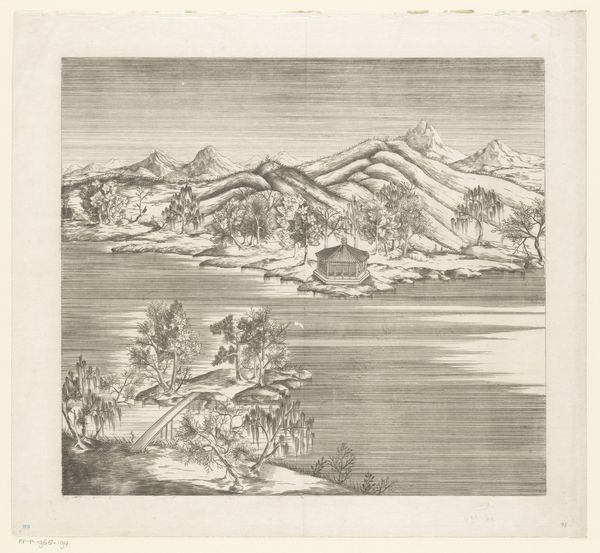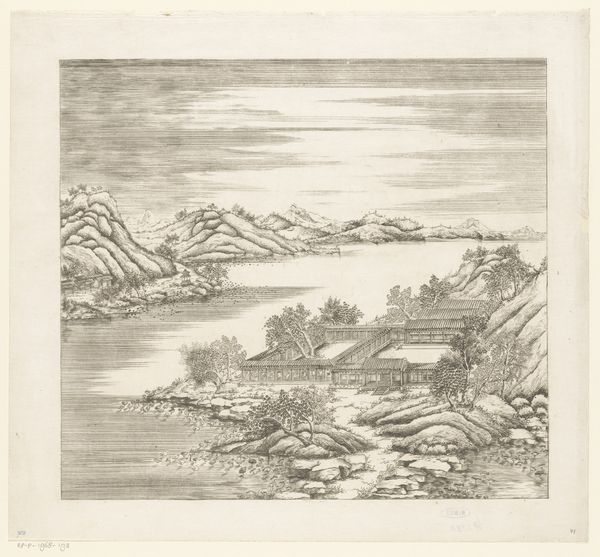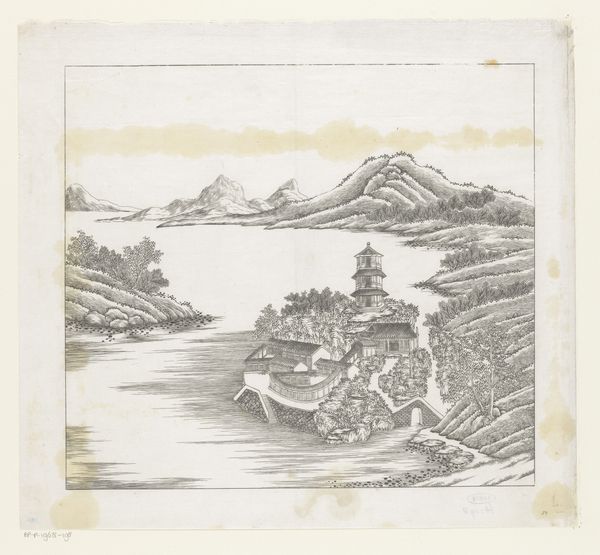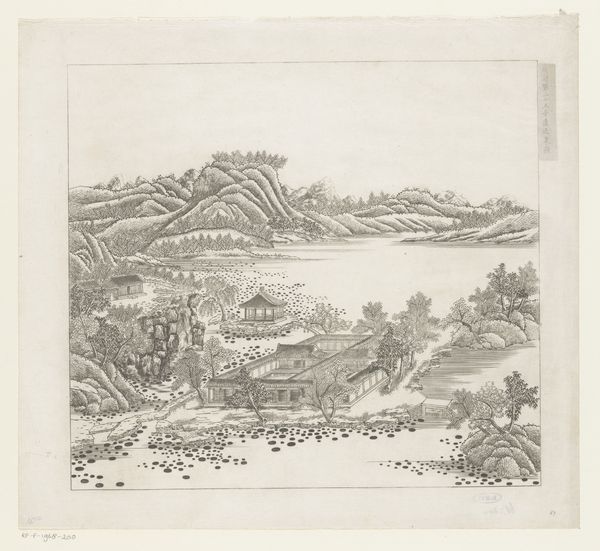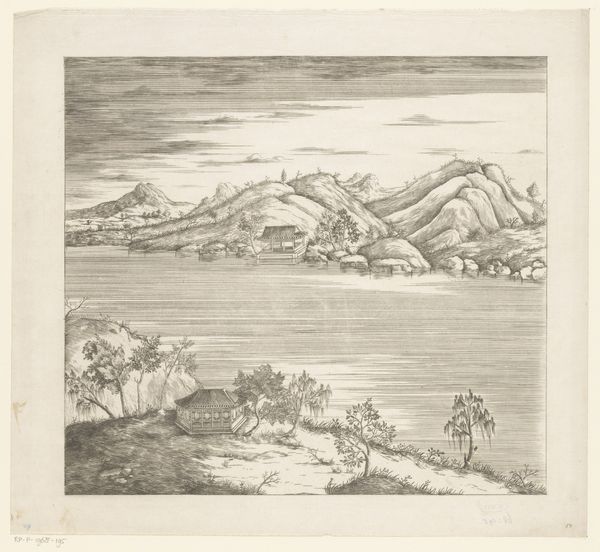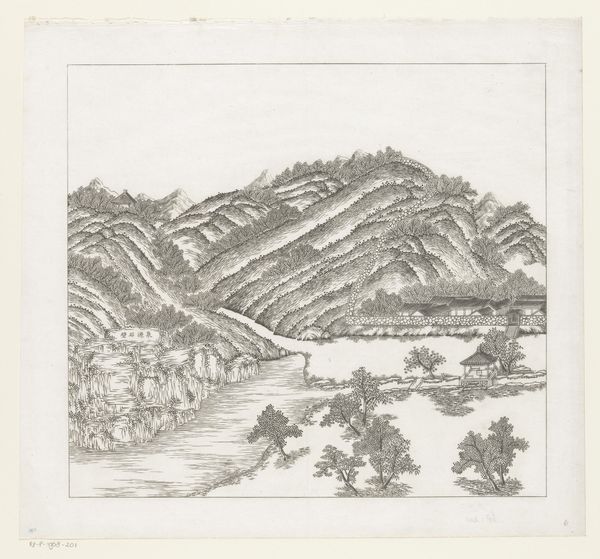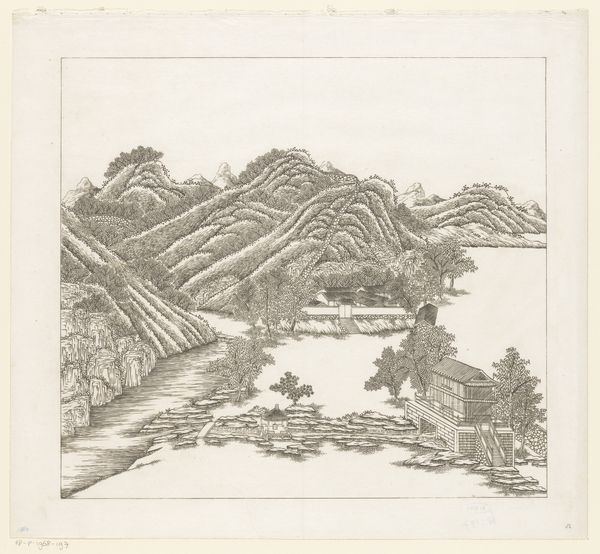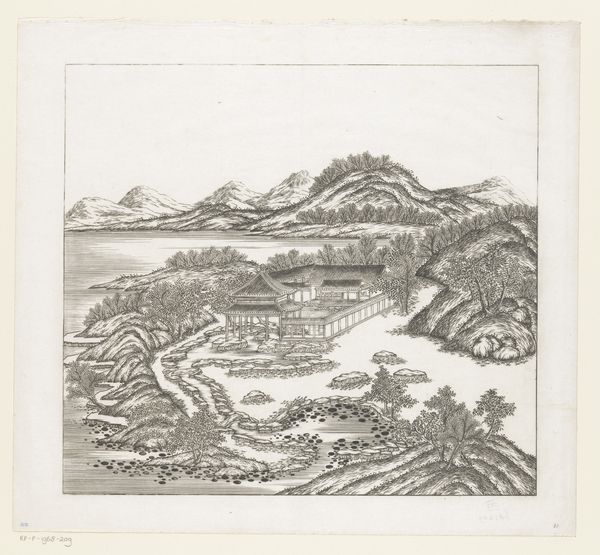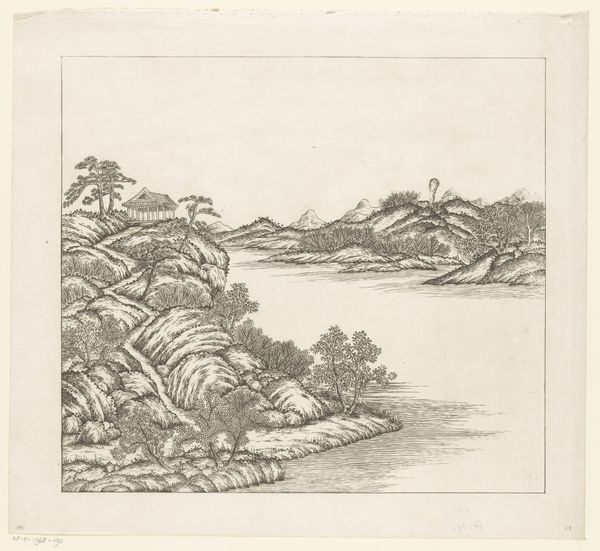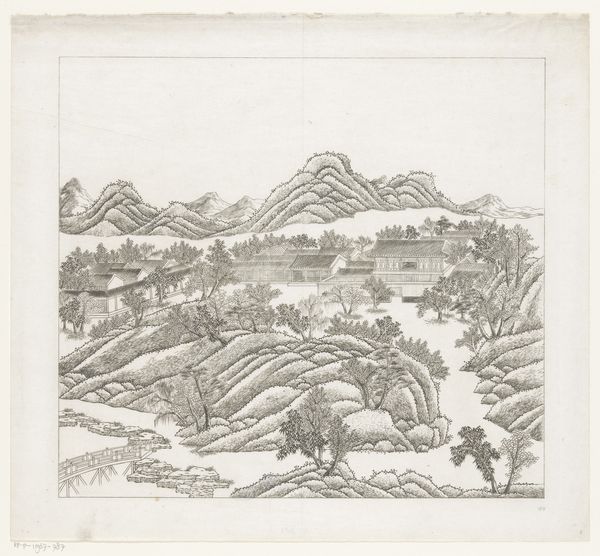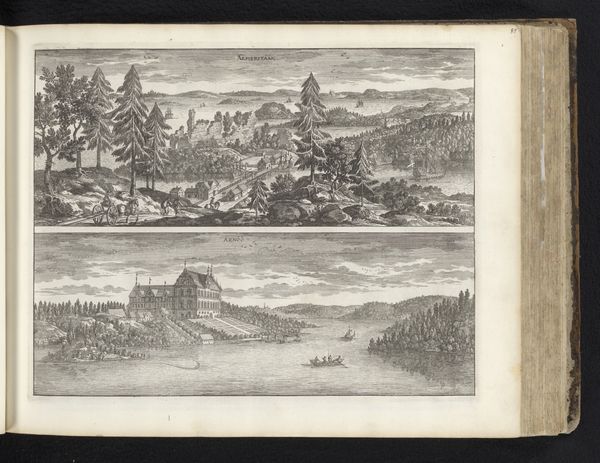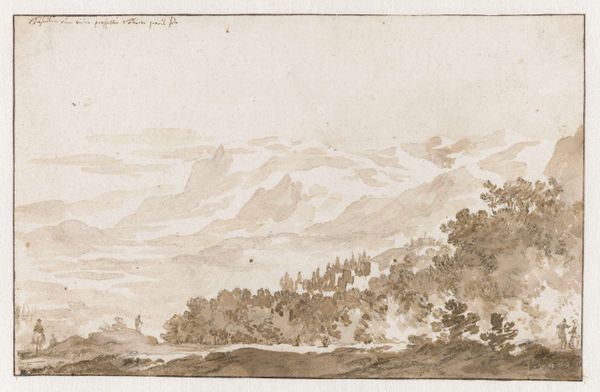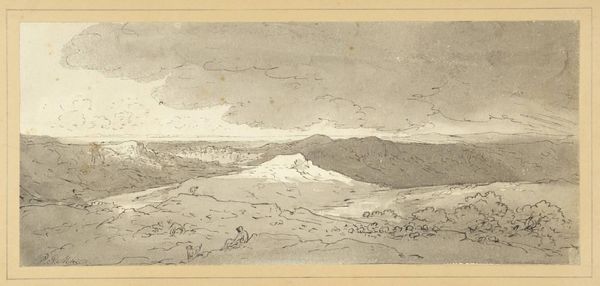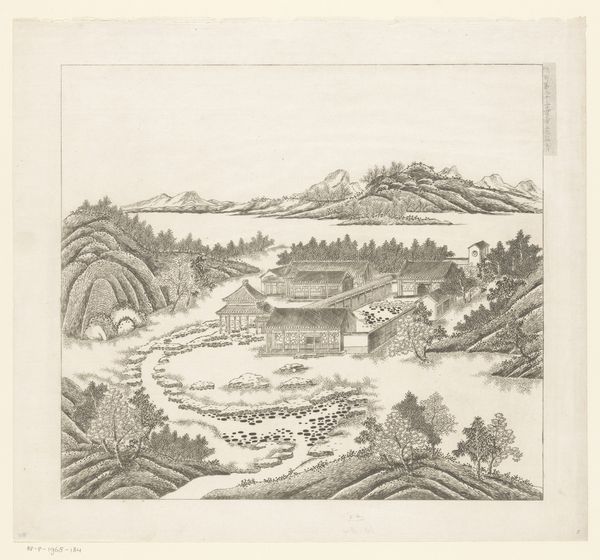
Gezicht op een deel van het keizerlijk zomerpaleis in Chengde (Jehol) te China 1712 - 1714
0:00
0:00
etching, engraving
#
etching
#
pencil sketch
#
asian-art
#
old engraving style
#
landscape
#
etching
#
engraving
Dimensions: height 323 mm, width 356 mm
Copyright: Rijks Museum: Open Domain
This is Matteo Ripa’s rendering of part of the imperial summer palace in Chengde, China. Made during the early 18th century, this print exists as a document of cultural exchange and artistic interpretation during a period of intense global interaction. Ripa, an Italian missionary and artist, was employed at the Qing court. His unique position allowed him access to spaces and landscapes that were largely closed off to outsiders. This work offers a glimpse into the aesthetic values of the Qing dynasty, emphasizing harmony between architecture and nature. However, this image is also mediated through Ripa’s European perspective, reflecting the complex dynamic of cross-cultural representation. Consider how Ripa’s identity and background might have influenced his interpretation and presentation of the Chinese imperial palace. In what ways does this image bridge or blur the lines between observation, documentation, and personal expression?
Comments
No comments
Be the first to comment and join the conversation on the ultimate creative platform.
